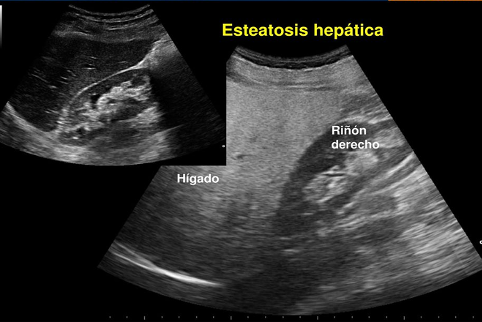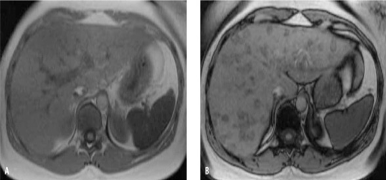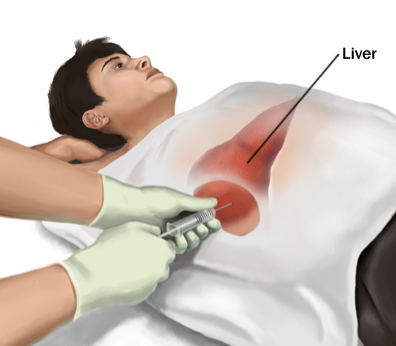Fatty liver disease comprises a broad group of liver conditions, ranging from simple liver steatosis to steatohepatitis, fibrosis, and even cirrhosis.
Age and obesity increase its prevalence and there is a strong association with metabolic syndrome and increased cardiovascular mortality and malignant diseases. When should you suspect it? How is it diagnosed? How do we prevent it or even reverse it?
Dr. Débora Nuevo – Neolife Medical Team
When should you suspect it?
In patients where liver steatosis is suspected, an initial assessment is recommended through a complete anamnesis or medical history, a full physical examination, and some complementary tests.
1. Medical history:
The patient should be asked the following questions, and an alert should be raised if he or she presents:
- Alcohol intake of more than 20 mg/day in women or more than 30 mg/day in men
- History of hepatitis C and/or B virus infection
- Personal history or family history of diabetes, high blood pressure, and/or cardiovascular disease
2. Physical examination, attention should be paid to the following findings:
- Body Mass Index > 25
- Waist circumference > 102 cm in men or > 88 cm in women
- Significant changes in body weight
3. Complementary tests, monitoring parameters such as:
- Liver enzymes (GOT, GPT, GGT)
- Fasting blood sugar test, HBA1, insulin, HOMA index
- Complete blood count
- Total cholesterol, HDL. triglycerides, and uric acid
How is it diagnosed?
There are different methods for formulating a diagnosis, both noninvasive (like blood tests and a variety of imaging techniques) and invasive methods, like a liver biopsy.

Laboratory data:
- The GPT value has sometimes been used as a screening method for diagnosis. It may be elevated, though it does not usually double or triple the lab’s reference value.
- The relationship between the GOT and GPT, a GOT/GPT ratio > 0.8, allows us to suspect stages of advanced steatosis.
- Elevated liver enzymes and proteins like GGT, alpha-2-macoglobulin, haptoglobin, apolipoprotein A, and TIMP1 should be noted, though none of them is a specific marker.
- High levels of ferritin may also act as predictors of fibrosis.
- Pro-inflammatory cytokines, like TNF alfa and Interleukin 6 (IL-6) may be elevated compared to other patients with fatty liver disease without inflammation.
Imaging tests:
- Abdominal ultrasound: the most commonly used imaging test. It is safe, non-invasive, accessible, low cost, and quite accurate in terms of diagnosis. A fatty liver without steatosis shows a homogeneous echostructure similar to the renal cortex and spleen. A fatty liver has greater echogenicity (it is brighter) due to the accumulation of fat vacuoles within the cells. There are four grades of liver steatosis as seen in an ultrasound: grade 0, without steatosis; grade 1, mild; grade 2, moderate; and grade 4, severe. The sensitivity to detect steatosis is about 93% the more fat there is.

- CT scan: a very accurate way to diagnose grade 2 and 3 steatosis, but not to detect grade 1. The attenuation of the liver parenchyma in the CT scan may be altered by other factors like excess iron and glycogen.
- Magnetic resonance imaging: the most sensitive imaging method for detecting an increase in liver fat. It can detect steatosis with only 3% fat content. The only drawback is that it is somewhat more expensive and less readily available than ultrasound.
- Fibroscan or transient elastography: performed with ultrasonographic pulse. It can detect cirrhosis with high accuracy, but its accuracy is lower in stages with less fibrosis.
Invasive tests: A liver biopsy is the best method for diagnosing, classifying, and predicting the evolution of liver steatosis. However, it is an invasive method, not without possible complications, so it should be reserved for patients with high risk of advanced fibrosis to rule out other causes of steatosis or fibrosis.

How can we prevent and/or treat it?
There is currently no specific treatment for fatty liver disease. The goal, both to prevent it and to treat it once diagnosed, is to control risk factors.
- Weight control: in patients with obesity or overweight it is recommended that they lose 10% of the initial weight in the first 6 months (between half a kilo and one kilo a week).
- A diet rich in polyunsaturated fatty acids and low in saturated fats, with antioxidants, fiber, fruits, and vegetables.
- Exercise for at least 30 minutes a day.
- Maintaining optimal cholesterol and glucose levels.
- No smoking and avoiding alcohol.
Some pharmacological measures, such as oral hypoglycemic medications and statins are sometimes also necessary. Medications that aid weight loss, such as orlistat, which inhibits fat absorption, can be quite useful in these patients.
Additionally, there are other therapies under study, such as probiotics that decrease bacterial translocation and decrease levels of TNF Alpha and IL6, among others, lessening liver damage.
Melatonin and Omega 3 fatty acid supplements have also been studied with very good results in lowering the amount of fat and liver damage.
BIBLIOGRAPHY
(1) Aller R, et al. Documento de consenso. Manejo de la enfermedad hepática grasa no alcohólica (EHGNA) [Management of nonalcoholic fatty liver disease (NAFLD)]. Guía de práctica clínica. Gastroenterol Hepatol. 2018. https://doi.org/10.1016/j.gastrohep.2017.12.003
(2) European Association for the Study of the Liver (EASL); European Association for the Study of Diabetes (EASD); European Association for the Study of Obesity (EASO). EASL-EASD-EASO Clinical Practice Guidelines for the management of nonalcoholic fatty liver disease. J Hepatol. 2016;64:1388—402. 2.
(3) Rinella ME. Nonalcoholic fatty liver disease. A systematic review. JAMA. 2015;313:2263—73. 3. Loomba R, Sanyal AJ. The global NAFLD
(4) Nobili V, Alisi A, Raponi M. Pediatric non-alcoholic fatty liver disease: Preventive and therapeutic value of lifestyle.
(5) Elizabeth Hernández-Pérez, Plácido Enrique León García, Norma Edith López-Díazguerrero, Fernando Rivera-Cabrera, Elizabeth del Ángel Benítez. Hígado graso y esteatohepatitis no alcohólica: patogénesis y tratamiento [Fatty liver and nonalcoholic steatohepatitis: pathogenesis and treatment].
(6) Liver steatosis and nonalcoholic steatohepatitis: from pathogenesis to therapy. Medwave2016 Sep;16(8):e6535 doi: 10.5867/medwave.2016.08.6535
